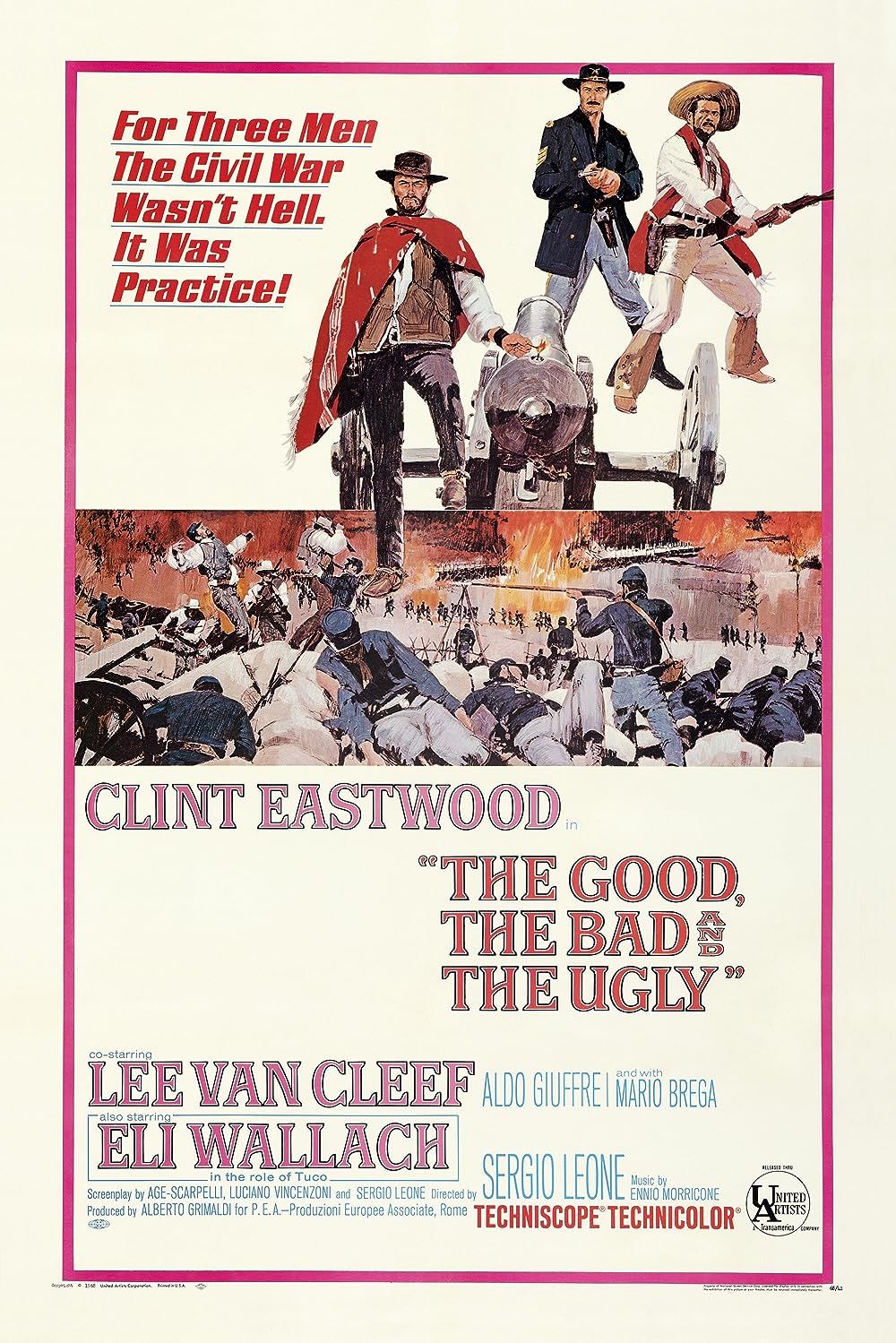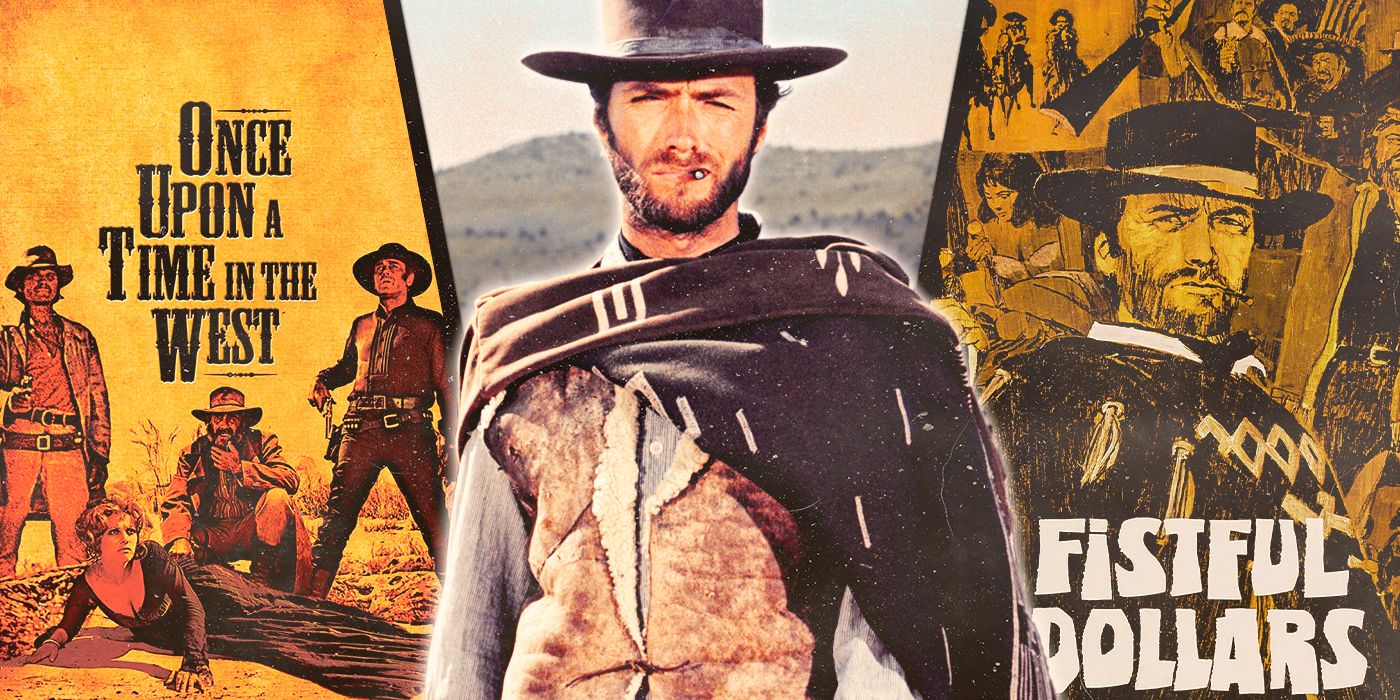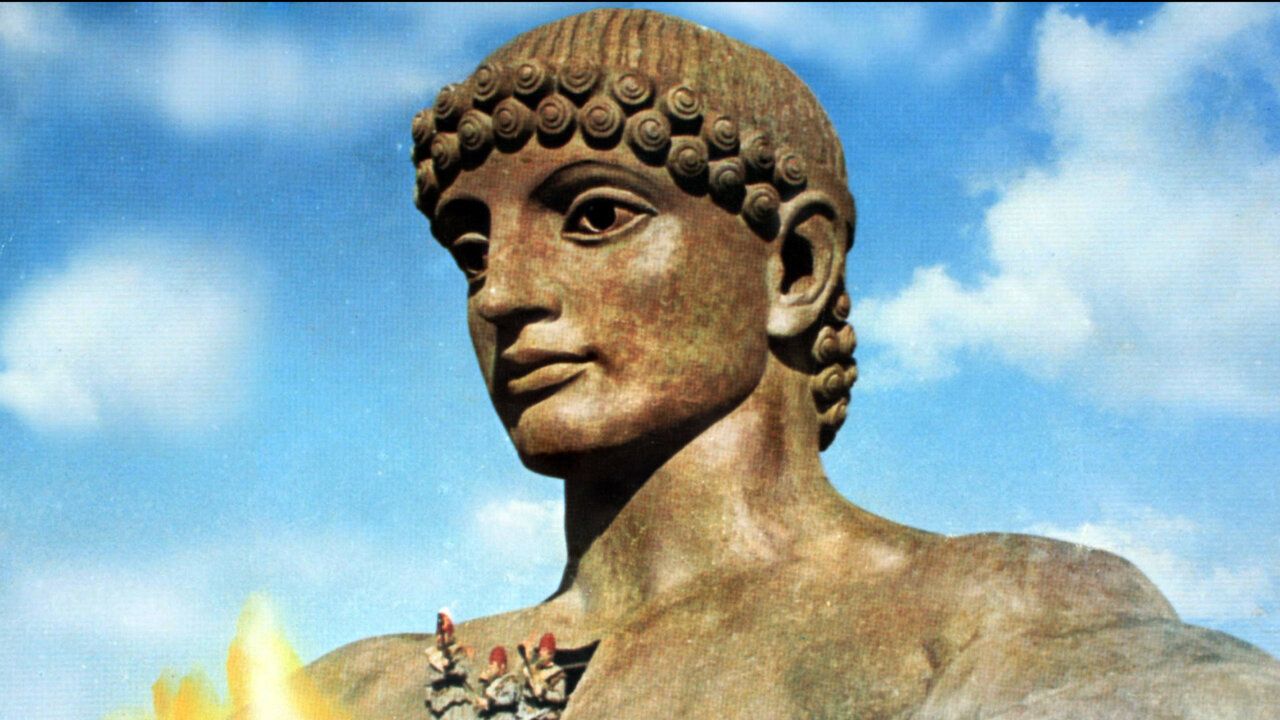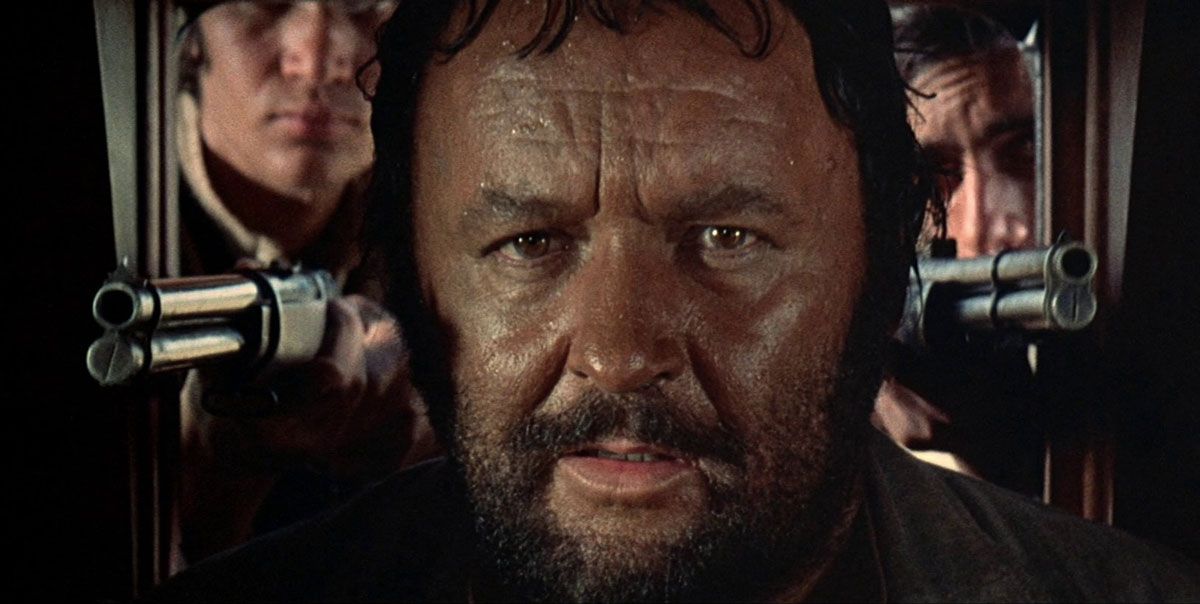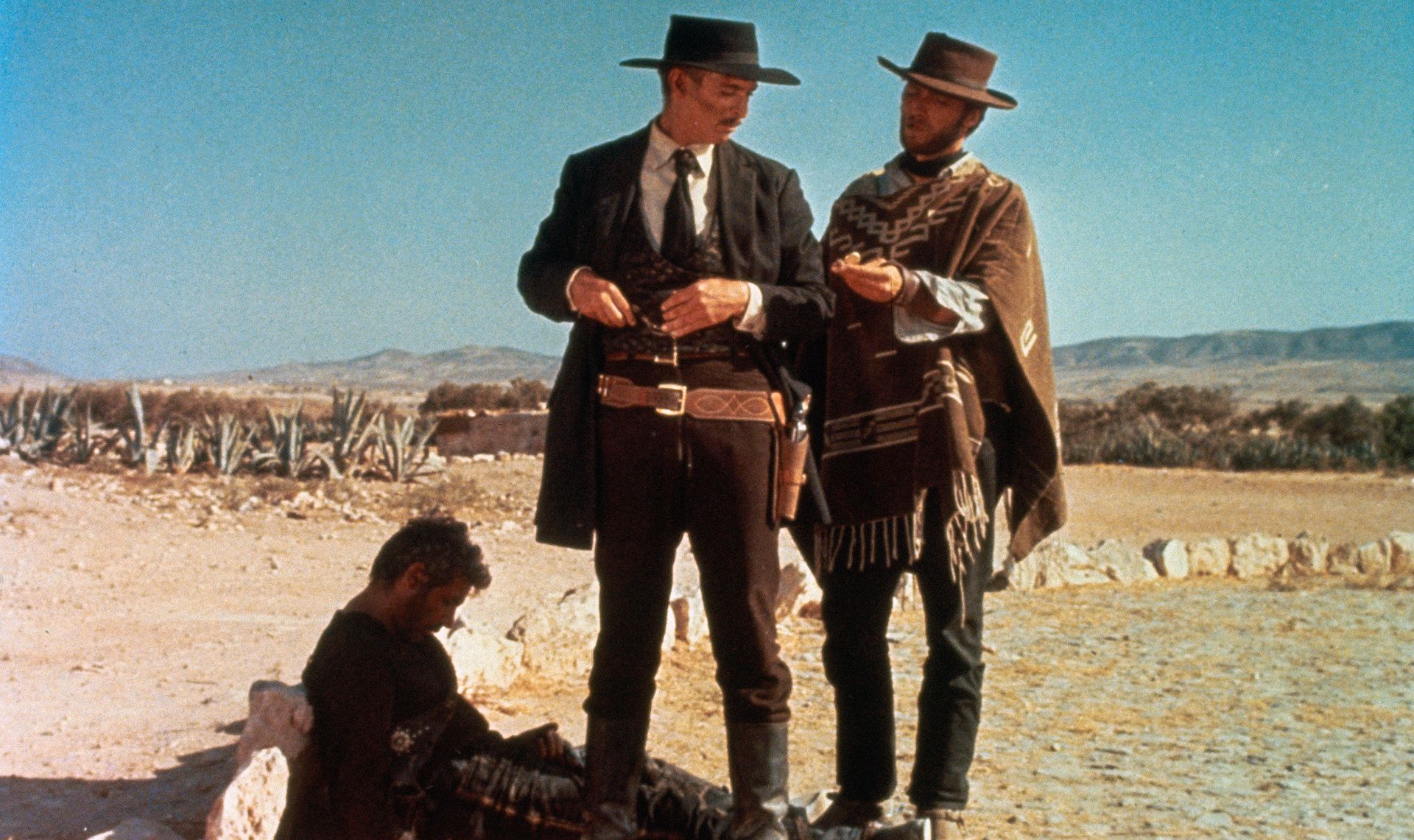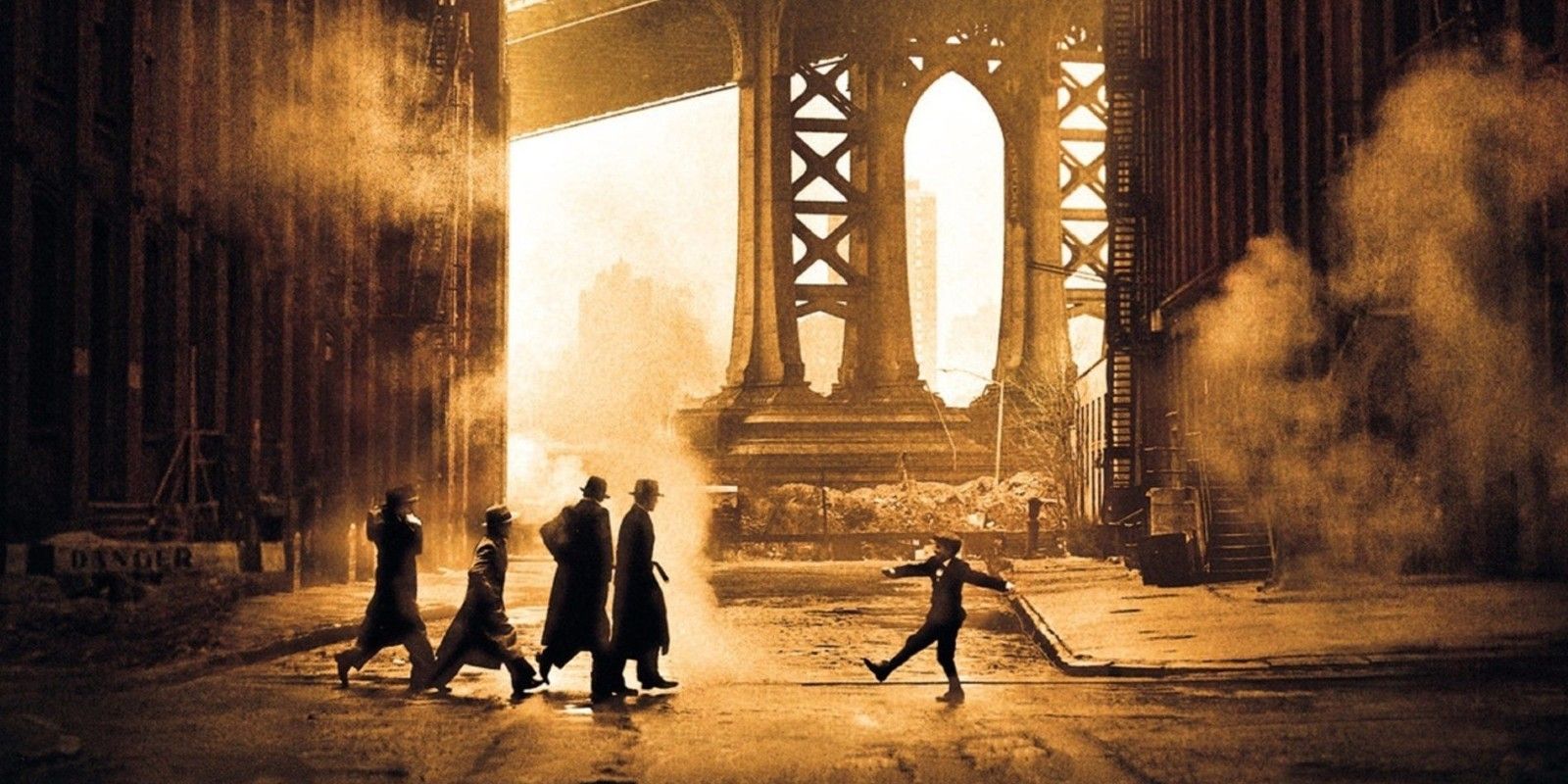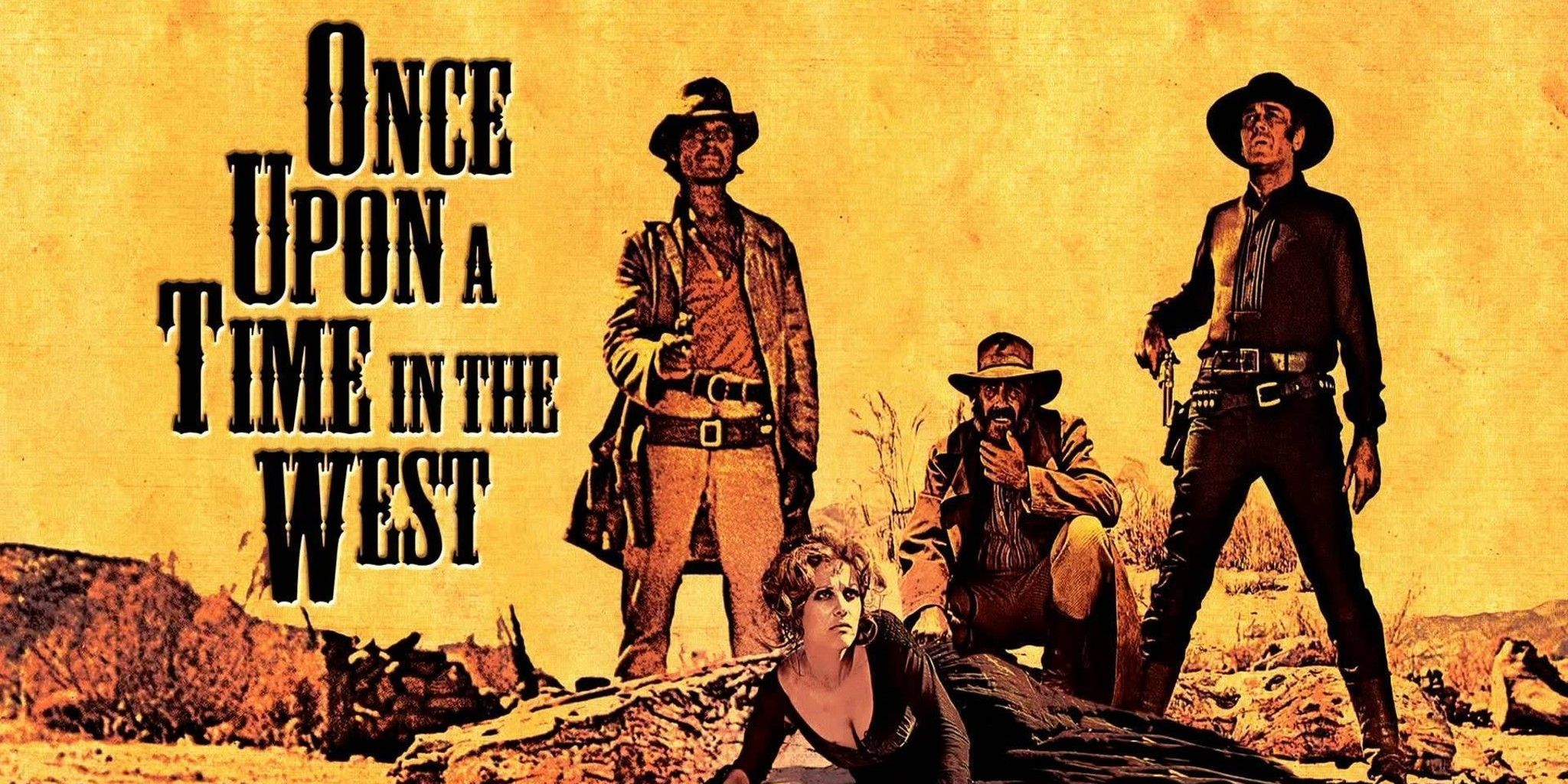Italian director Sergio Leone is often considered to be one of the best filmmakers ever to pick up a camera. His films were so stylized that they often split the difference between high art and low art, elevating the otherwise generic stories of his movies into visual and audio extravaganzas.
Unfortunately, Sergio Leone only lived long enough to direct eight feature films, one of which was never officially credited to him. He began with low-budgeted Sword and Sandal movies in the Italian studio system before becoming so undeniable as a storyteller that he would reinvent the Western genre, creating what's known as the Spaghetti Western. From picturesque landscapes to uncomfortable close-ups and transcendent use of music, Sergio Leone's films were undeniable and utterly unforgettable.
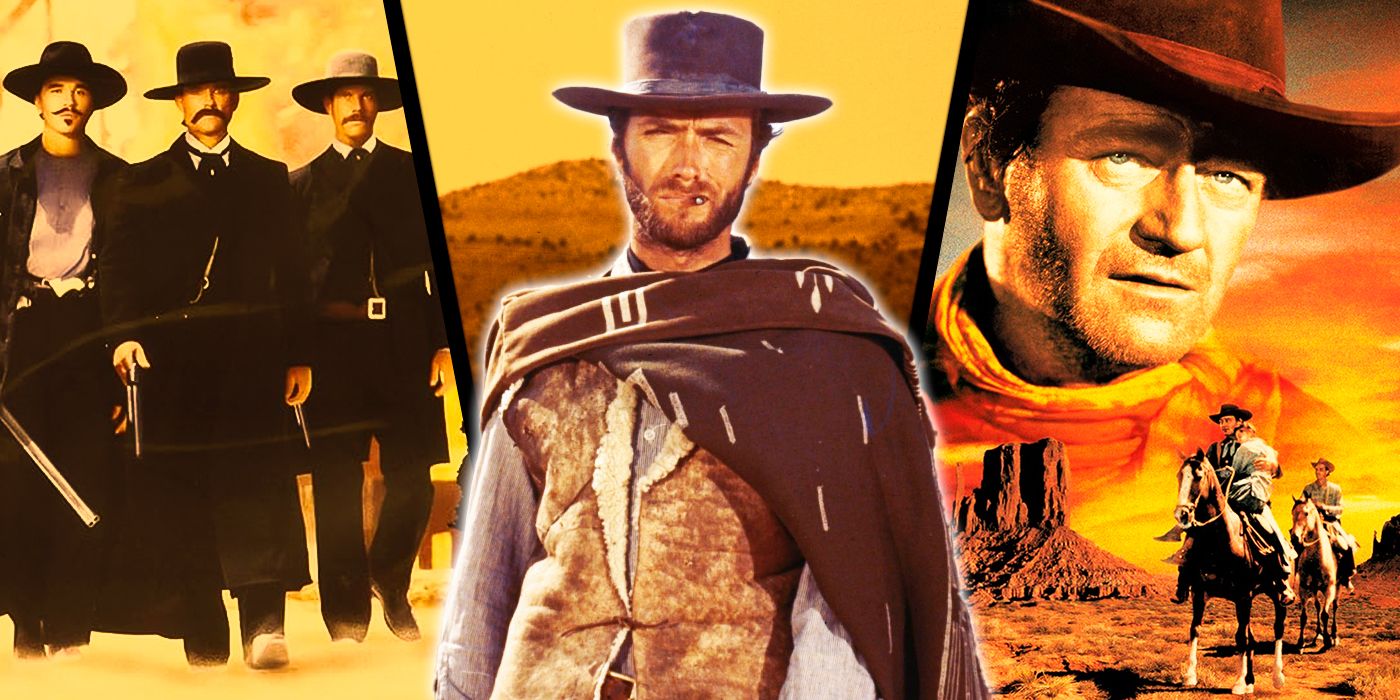
10 Most Important Westerns of All Time
The Western genre has massively influenced the cinematic medium and produced several of the most important films of all time.8 The Last Days of Pompeii Is Where Sergio Leone Cut His Filmmaking Teeth
|
Written by: |
Ennio De Concini, Luigi Emmanuele, Sergio Leone, Duccio Tessari, and Sergio Corbucci |
|---|---|
|
Directed by: |
Mario Bonnard (Officially) / Sergio Leone (Unofficially) |
|
Year Released: |
1959 |
|
IMDb Rating: |
5.6/10 |
Unofficially speaking, The Last Days of Pompeii was Sergio Leone's very first film. Although credited to director Mario Bonnard, the original filmmaker fell ill on the first day of shooting. Sergio had already been hired as the assistant director and was asked to take over to ensure the production stayed on track. The film tells the story of Glaucus, a Roman centurion returning home from Pompeii only to discover that a cult has killed his father.
Despite reportedly shooting some 99% of the movie himself, Sergio Leone refrained from injecting the film with what later became his trademarked visual style. Instead, he followed Mario Bonnard's storyboards to a tee and finished the film how the original director conceived it. The result was a movie that, while feeling lived-in, was paper-thin in terms of characterization and plot. Without Leone's stylistic flourishes to fall back on, The Last Days of Pompeii felt pretty lifeless.
7 The Colossus of Rhodes Was Sergio Leone's Official Directorial Debut
|
Written by: |
Ennio De Concini, Sergio Leone, Cesare Seccia, Luciano Martino, Ageo Savioli, Luciano Chitarrini, Carlo Gualtieri, and Duccio Tessari |
|---|---|
|
Directed by: |
Sergio Leone |
|
Year Released: |
1961 |
|
IMDb Rating: |
5.8/10 |
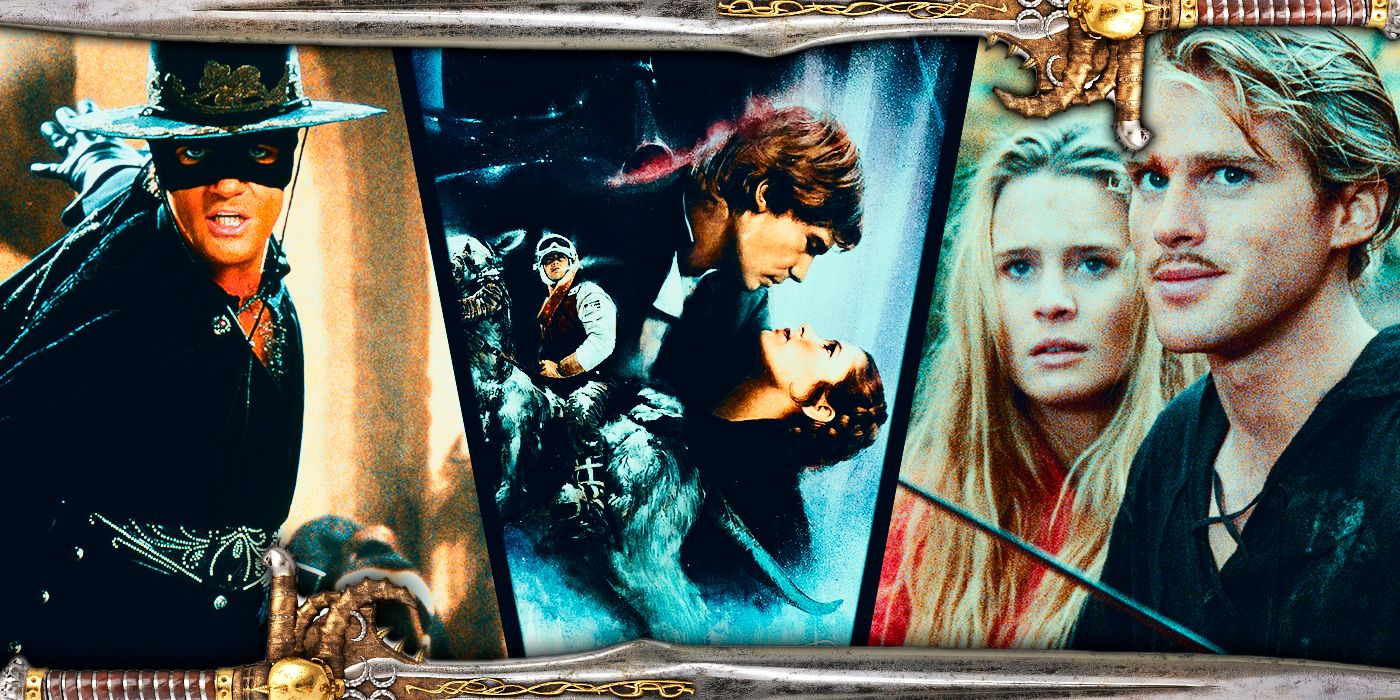
The Greatest 10 Sword Fights in Movies, Ranked
Swords cross and stars clash against one another amid great set pieces and witty scripts in Hollywood movies' greatest sword fights.After stepping in and proving himself during the debacle of The Last Days of Pompeii, Sergio Leone was rewarded with his official directorial debut in the form of The Colossus of Rhodes. Yet another Sword and Sandal epic, the film was a significant step up in quality over his previous effort, offering audiences bigger setpieces, better special effects, and a charismatic lead actor in Rory Calhoun, who played the film's protagonist, Darios, a Greek military hero who finds himself embroiled in a plot to overthrow Rhodes' tyrannical leader.
Improvement though it was, The Colossus of Rhodes still finds a way to overstay its welcome. The cast is too large and unruly to manage, while the pacing could be more balanced. Leone's eye for directing action improved throughout this film, and it's clear that he was slowly coming into his own as a filmmaker. Seeing that process unfold on screen through his use of tracking shots and intense close-ups is the best reason to search for a copy of this film and finally give it a watch.
6 Duck, You Sucker Might Be Leone's Most Overlooked Film
|
Written by: |
Sergio Leone, Sergio Donati, Luciano Vincenzoni, Roberto de Leonardis, and Carlo Tritto |
|---|---|
|
Directed by: |
Sergio Leone |
|
Year Released: |
1971 |
|
IMDb Rating: |
7.6/10 |
Odds are, most fans of Sergio Leone's work have heard of every single Western the man has ever directed, with one notable exception. Known by various names, including A Fistful of Dynamite and Once Upon a Time... The Revolution, Duck, You Sucker was Leone's final Spaghetti Western and the second entry in his Once Upon a Time Trilogy. Set in 1913, the film tells the story of a Mexican bandit, Juan, who becomes an unlikely hero of the Mexican Revolution.
As the penultimate film of Sergio Leone's remarkable career, Duck, You Sucker is a fantastic piece of filmmaking featuring a pair of electric performances from Rod Steiger and James Coburn. It might not reach the same levels as his other Westerns, but the film still managed to send Leone out on a high note, which was only fitting considering the indelible mark he left on the genre.
5 For A Few Dollars More Was Where Sergio Leone Put All the Pieces Together
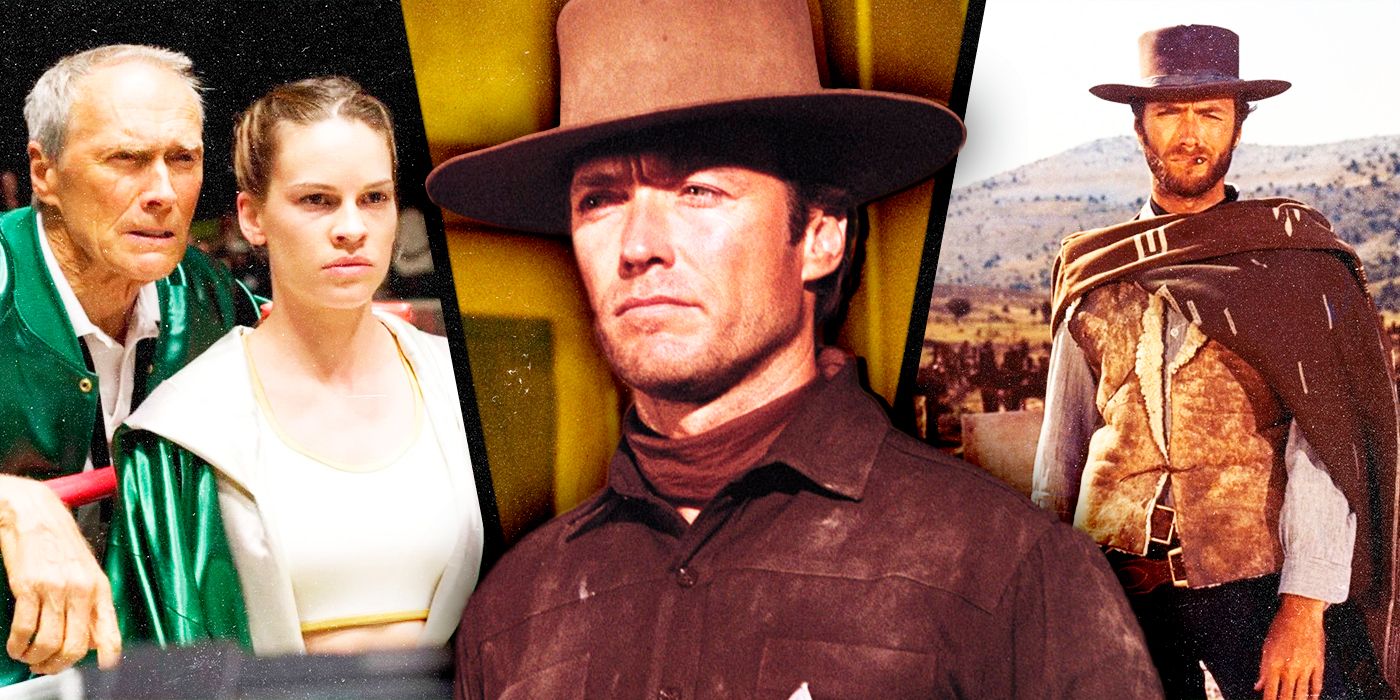
10 Best Clint Eastwood Movies, Ranked
From the Dollars trilogy and classic westerns to dramas like Million Dollar Baby, Clint Eastwood's cinematic resume makes him an icon.|
Written by: |
Sergio Leone, Fulvio Morsella, Luciano Vincenzoni, Sergio Donati, Enzo Dell'Aquila, and Fernando Di Leo |
|---|---|
|
Directed by: |
Sergio Leone |
|
Year Released: |
1965 |
|
IMDb Rating: |
8.2/10 |
Looking to improve upon his original Spaghetti Western, A Fistful of Dollars, Sergio Leone hired the iconic actor Lee Van Cleef for his follow-up film, For A Few Dollars More. While the overall picture might not quite rise to the level of Leone's previous effort, it's undeniable that Cleef turns in a performance for the ages as Colonel Mortimer, providing the perfect reluctant ally and counterpart to Clint Eastwood's second portrayal of the Man with No Name as the two men teamed-up to chase down a relentless bank robber named El Indio.
Without question, the film's high point was the final showdown, which is punctuated by El Indio's musical pocket watch, a motif that recurs constantly throughout the film. Scored as it was by Ennio Morricone, "Watch Chimes" is among the most haunting pieces of music to ever appear in a Leone film, which is saying something. As the film moves briskly from one set piece to another, it's clear that Sergio Leone is finally in complete control of his craft.
4 A Fistful of Dollars Was the Birth of a New Genre
|
Written by: |
Adriano Bolzoni, Mark Lowell, Víctor Andrés Catena, Sergio Leone, Jaime Comas Gil, Fernando Di Leo, Duccio Tessari, and Tonino Valerii |
|---|---|
|
Directed by: |
Sergio Leone |
|
Year Released |
1964 |
|
IMDb Rating: |
7.9/10 |
Sergio Leone's first Spaghetti Western, A Fistful of Dollars, was also the first entry in his Dollars Trilogy. Without a doubt, this movie's release was a watershed moment in the history of cinema, and it contained many elements of what would become Leone's trademarked style, not to mention introduced the world to the man who would become the face of the Western for generations to come in actor Clint Eastwood. Borrowing most of its plot (unofficially) from Akira Kurosawa's Yojimbo, A Fistful of Dollars told the story of the Man with No Name pitted against two rival factions in a small Italian town.
Trading in the hand-to-hand combat of his previous Sword and Sandal epics for a few firey gunfights was all Sergio Leone needed to shine. Throughout A Fistful of Dollars, which has a relatively short running time of just over 90 minutes, the director masterfully builds suspense by taking advantage of extreme close-ups, Ennio Morricone's score, and the film's incredible lived-in aesthetic. Any self-described fan of the Western genre who has yet to see this seminal film must search it out immediately.
3 Once Upon A Time in America Was Sergio's Swan Song
|
Written by: |
Sergio Donati, Sergio Leone, Dario Argento, and Bernardo Bertolucci |
|---|---|
|
Directed by: |
Sergio Leone |
|
Year Released: |
1984 |
|
IMDb Rating: |
8.3/10 |
The last movie Sergio Leone ever directed, Once Upon a Time in America, was also the final entry in his Once Upon a Time Trilogy. After solely concentrating on Westerns for two decades, Leone chose to tackle a new genre, the American gangster picture, with (who else) Robert DeNiro in the starring role of Noodles, a former New York City mobster who, in his later life, must contend with the mistakes of his past.
There's no way around it. Once Upon a Time in America is long. Four hours long. However, anyone willing to give this film the time it deserves will be rewarded with Robert DeNiro's powerful performance, which sees him chronicle Noodles' story through various ages, similar to how Martin Scorsese would later do in The Irishman, only much more effectively accomplished. Moreover, the production design is otherworldly, combining the Big Apple with a decidedly European aesthetic, creating an uncanny effect for the audience. Without a doubt, this was Sergio Leone's most mature film. It's just too bad it was also his last.
2 Once Upon a Time in the West Saw Leone at the Top of his Craft
|
Written by: |
Sergio Donati, Sergio Leone, Dario Argento, and Bernardo Bertolucci |
|---|---|
|
Directed by: |
Sergio Leone |
|
Year Released: |
1968 |
|
IMDb Rating: |
8.5/10 |
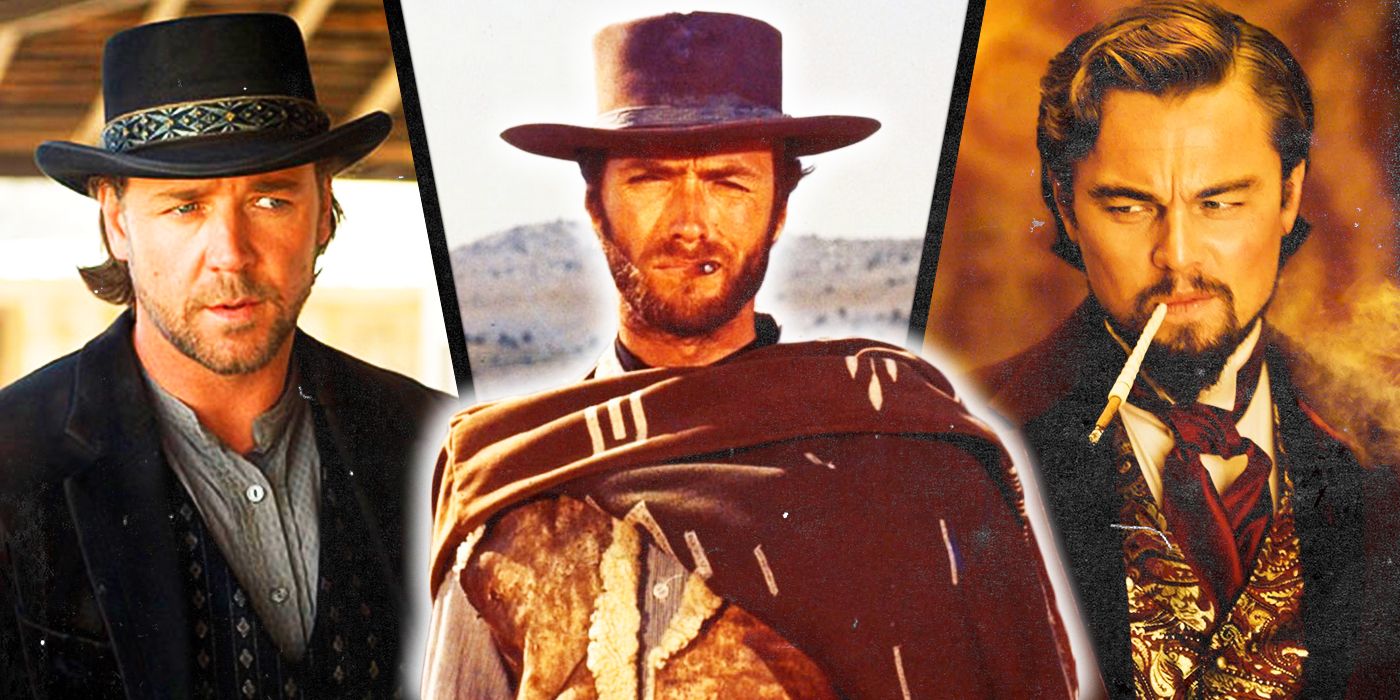
10 Best Final Showdowns in Western Movies, Ranked
The Western genre is known for its climactic endings, which is why it has spawned some of the best final showdowns in cinema history.The first entry in Sergio Leone's Once Upon a Time Trilogy, Once Upon a Time in the West, was an incredible work of art that takes its time with everything it does. It tells the story of Jill McCain, a widow who inherits one of the only sources of water in an expanding region of the American Frontier after the hired gun, Frank, kills her husband. Struggling to hold onto what's hers, Jill meets a harmonica-playing drifter and a bandit who have a history with Frank, and the trio teams up to take him down.
Starring Claudia Cardinale as Jill, Henry Fonda as Frank, Charles Bronson as Harmonica, and Jason Robards as Cheyenne, Once Upon a Time in the West might be the best-cast film of Sergio Leone's career. Each actor brings an incredible presence to their role, and Claudia Cardinale steals the show. Moreover, nearly a decade into his directorial career, Leone completely controlled his craft. He stripped the story to its bare essentials to focus on how it was told rather than what it was about — a decision best characterized by its one-of-a-kind final showdown.
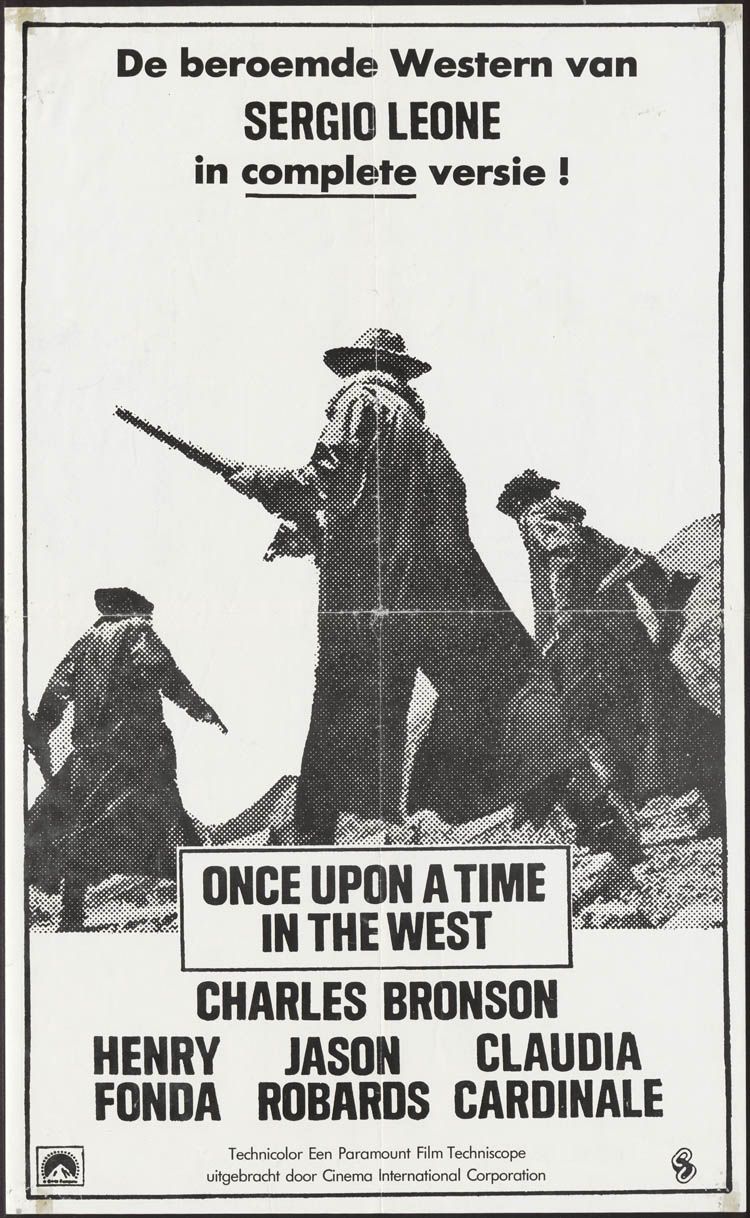
Once Upon a Time in the West
A mysterious stranger with a harmonica joins forces with a notorious desperado to protect a beautiful widow from a ruthless assassin working for the railroad.
- Director
- Sergio Leone
- Release Date
- July 4, 1969
- Cast
- Henry Fonda , Charles Bronson , Claudia Cardinale , Jason Robards , Gabriele Ferzetti
- Writers
- Sergio Leone , Sergio Donati , Dario Argento , Bernardo Bertolucci
- Runtime
- 166 Minutes
- Main Genre
- Western
- Production Company
- Rafran Cinematografica, San Marco, Paramount Pictures, Euro International Films
- Budget
- $5 Milllion
- Studio(s)
- Rafran Cinematografica , San Marco , Paramount Pictures
- Distributor(s)
- Paramount Pictures
1 The Good, the Bad, and the Ugly Had Everything You Could Ever Ask for in a Movie
|
Written by: |
Luciano Vincenzoni, Sergio Leone, Agenore Incrocci, and Furio Scarpelli |
|---|---|
|
Directed by: |
Sergio Leone |
|
Year Released |
1966 |
|
IMDb Rating: |
8.8/10 |
Often heralded as one of the best movies of all time, The Good, the Bad, and the Ugly is the final entry in Sergio Leone's Dollars Trilogy. Like many of Leone's other films, the plot is deceptively simple. When three outlaws learn of a buried treasure, they do their best to outwit and outlast one another to be the final cowboy standing and claim their prize while the American Civil War unfolds in the background.
This time, the energetic Eli Wallach joined the cast as Tuco to compliment the more restrained performances of Lee Van Cleef's Sentenza and Clint Eastwood's final turn as the Man with No Name. The characters' frequent switching of allegiances keeps the audience guessing regarding the film's outcome, and its explosive setpieces help balance out the film's epic runtime of nearly three hours. Sure, that might sound long, but it's absolutely impossible to look away when all three men finally confront one another in an unforgettable final showdown. There's a reason Quentin Tarantino has referenced this film numerous times; it's influence is simply undeniable.
